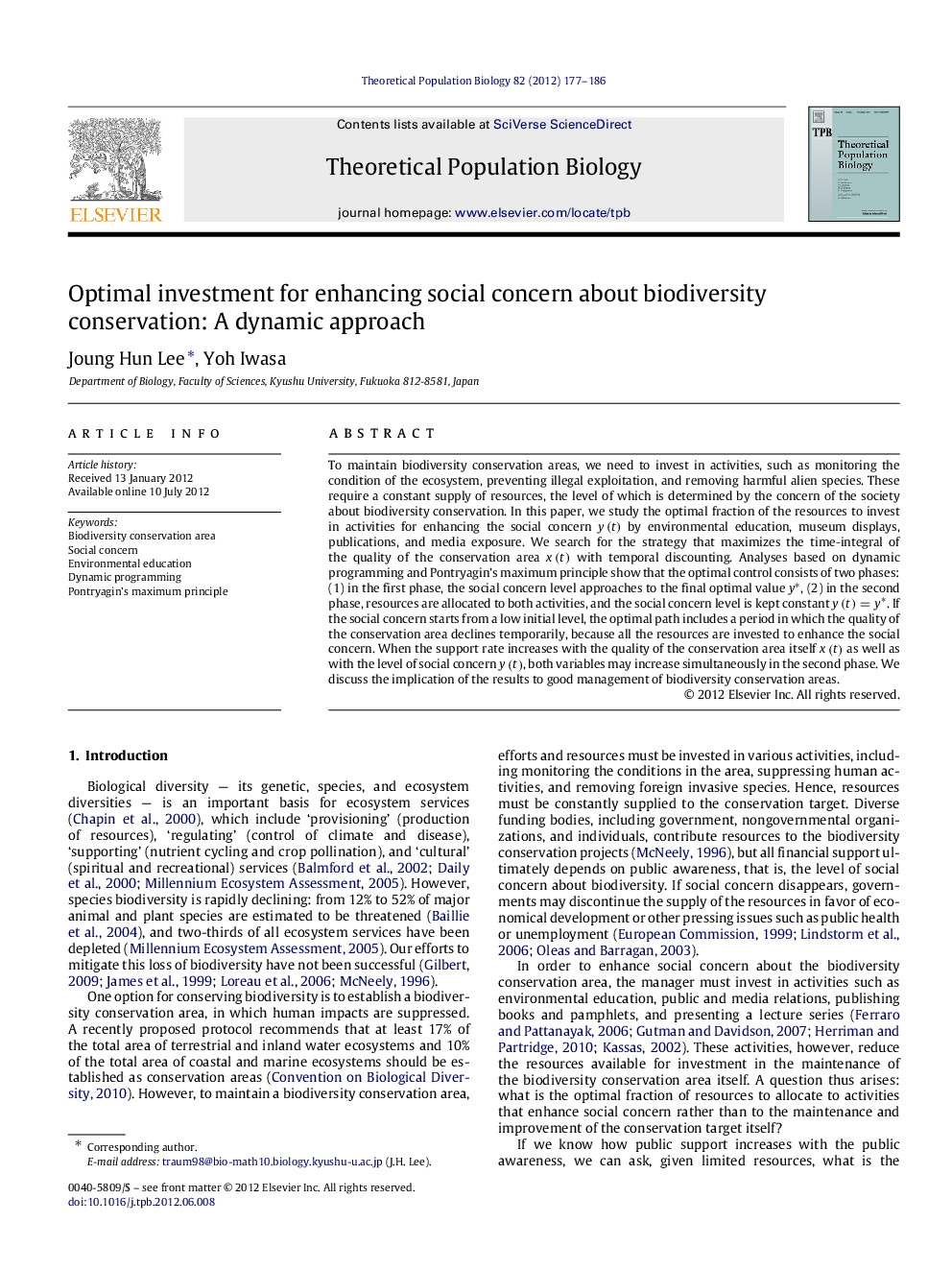| Article ID | Journal | Published Year | Pages | File Type |
|---|---|---|---|---|
| 6372415 | Theoretical Population Biology | 2012 | 10 Pages |
To maintain biodiversity conservation areas, we need to invest in activities, such as monitoring the condition of the ecosystem, preventing illegal exploitation, and removing harmful alien species. These require a constant supply of resources, the level of which is determined by the concern of the society about biodiversity conservation. In this paper, we study the optimal fraction of the resources to invest in activities for enhancing the social concern y(t) by environmental education, museum displays, publications, and media exposure. We search for the strategy that maximizes the time-integral of the quality of the conservation area x(t) with temporal discounting. Analyses based on dynamic programming and Pontryagin's maximum principle show that the optimal control consists of two phases: (1) in the first phase, the social concern level approaches to the final optimal value yâ, (2) in the second phase, resources are allocated to both activities, and the social concern level is kept constant y(t)=yâ. If the social concern starts from a low initial level, the optimal path includes a period in which the quality of the conservation area declines temporarily, because all the resources are invested to enhance the social concern. When the support rate increases with the quality of the conservation area itself x(t) as well as with the level of social concern y(t), both variables may increase simultaneously in the second phase. We discuss the implication of the results to good management of biodiversity conservation areas.
⺠We model the fund allocation between biodiversity conservation and social concern. ⺠We examine the optimal fraction of the resource allocation. ⺠Investing funds for social concern strengthens public support for conservation. ⺠Optimal schedule is investing all the resources to one aspect for quick convergence.
